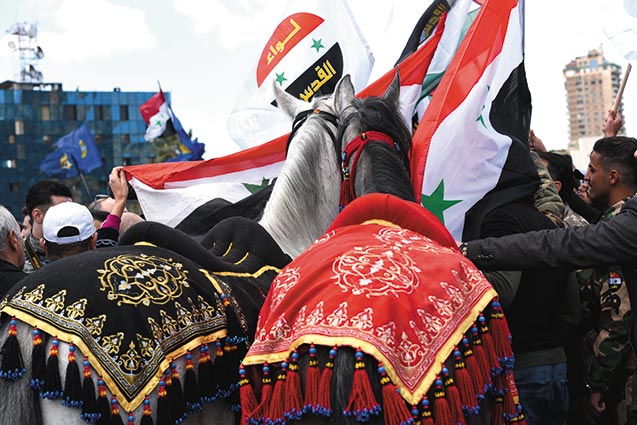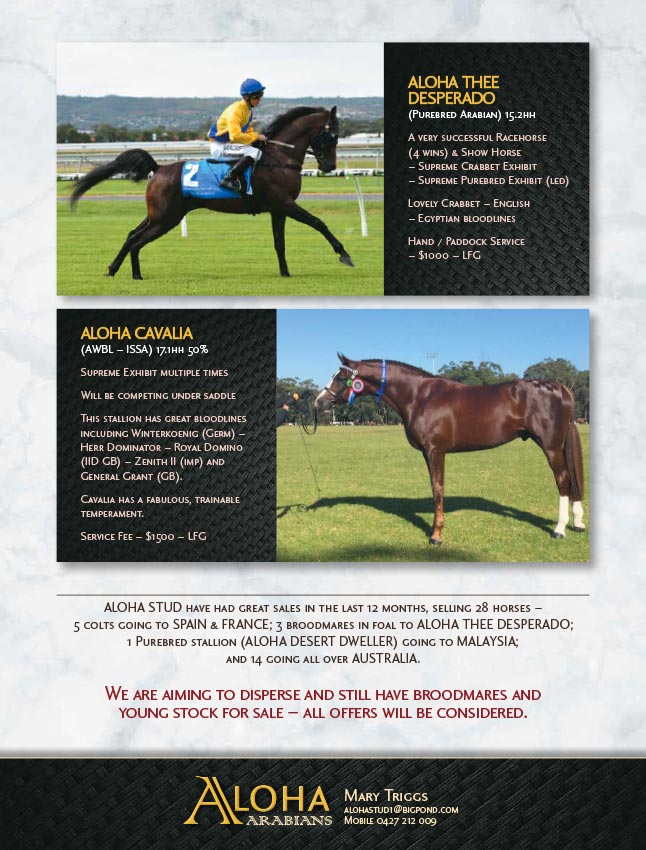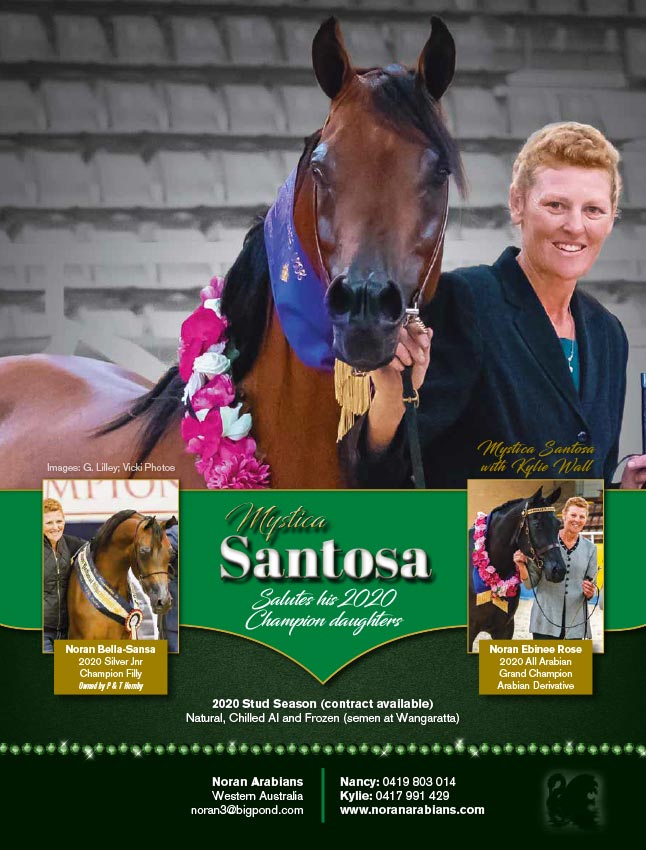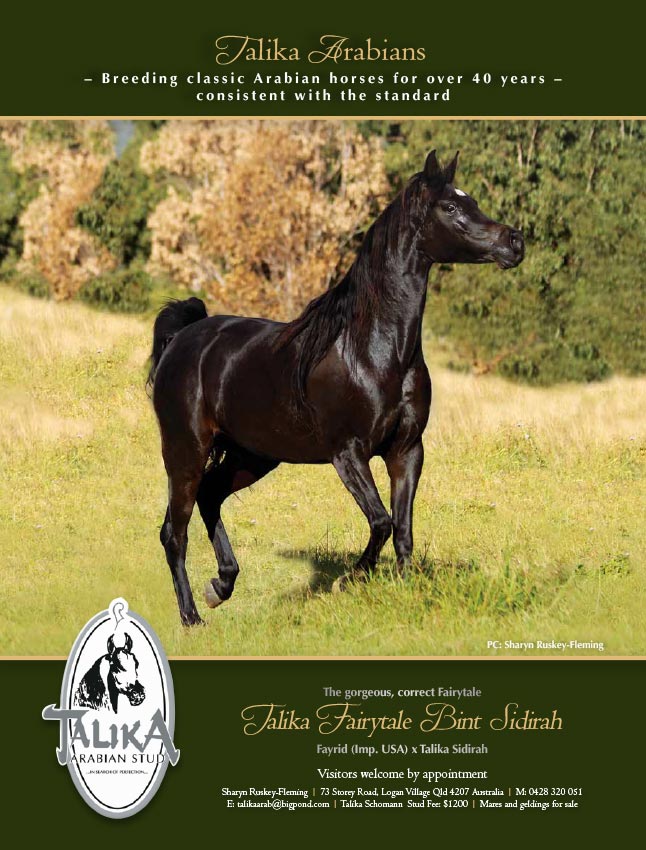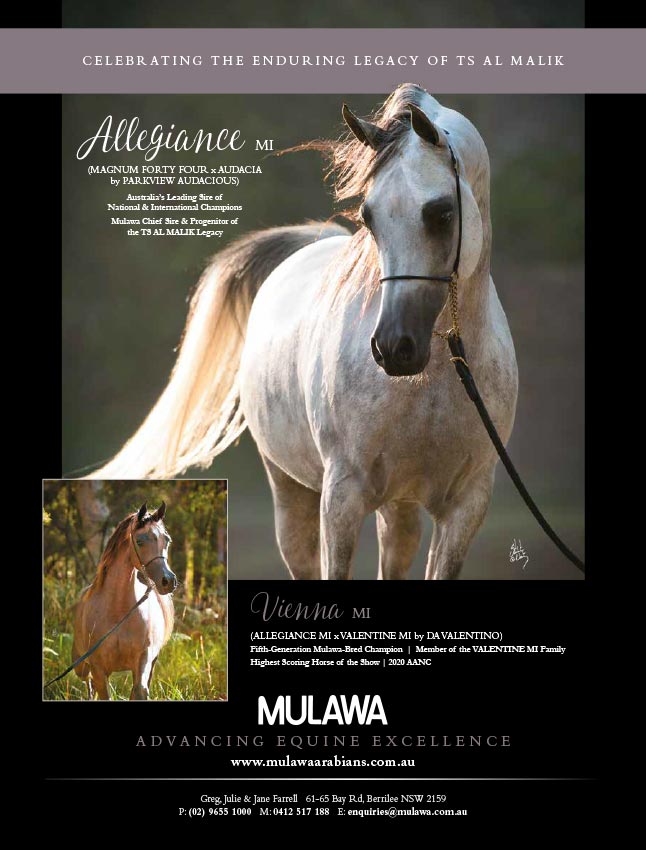Syriah’s Arabian Horses

Arabian Geldings and the people that love them
August 27, 2020
Castlebar Endurance
August 27, 2020Syriah’s Arabian Horses
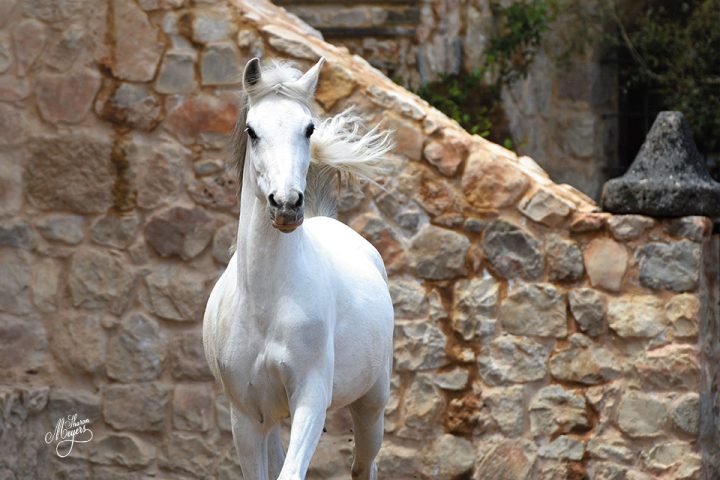
STORY AND PHOTOGRAPHY BY SHARON MEYERS
After years of turmoil and devastation, the Syrians celebrate and salute their treasured Arabians
I was honoured and excited to attend the Al Sham International Arabian Horse Festival held at the Old Damascus Show Grounds in Damascus, Syrian Arab Republic from April 16 to 20, 2019.
Interestingly, the festival’s name is derived from Bilad Al Sham which is the heart of symbolism for Syria; the fertile crescent and the Arabian horse. Syria is the cradle of the Arabian horse and these horses are an intrinsic part of the country’s history and culture. It’s a well-documented fact that over the centuries many horse-purchasing expeditions, along with individual travellers such as Lady Anne and Wilfrid Blunt and many others from Poland, Spain, Italy and elsewhere, visited Syria in search of the Arabian horse. As a result of their acquisitions nearly every Arabian Stud Book in the world has horses tracing back to Syrian ancestors.
My first visit to this magical country was in happier times during 2007, when attending their remarkable World Arabian Horse Organization (WAHO) Conference. Tragically, since 2011 Syria has been embroiled in vicious armed conflict but as the Phoenix of mythology did, Syria is now rising and renewing itself.
This war has taken a terrible toll on the country’s horse population with Arabians being displaced, kidnapped or killed. It’s estimated that around 3,000 horses disappeared, around a third of their Arabians.
Heartbreaking stories have surfaced, such as Syria’s oldest Arabian horse breeder Mr Mohammad Hisham Ghoreib having 250 of his treasured horses stolen. His lifetime work shattered! A breeder I visited in 2007, whose stud flanked the Euphrates River at Deir-ezzor had to flee for his life, forced to leave behind his beautiful pure Syrian horses. He was lucky as the Syrian Arab Army eventually found three offspring from his breeding program, and with the help of the Office of Arabian Horses they were returned to him. Fortunately freeze branding is universally used, making for easier identification of stolen or lost horses.


A distinguished year for the Arabian horse was 2018 when the members and committees of the Office of Arabian Horses contributed in the re-control and relocation of the movement and registration of the Arabian horse in Syria in cooperation with the breeders and owners, even in most of the war hot spots. During the years 2016/17/18 three visits were made to the eastern region of Syria and the province of rest of the Arab tribes. A total of 2,200 horses have been freeze branded during the three years. This was great work by the Registry Office members.
On Monday April 15th I arrived from Australia and travelled out to the Old Damascus Fair Ground to see how things were shaping up for the Official Opening the next night. There was a hive of activity putting finishing touches to the Traditional Hand Craft Fair and Traditional Food Fair pavilions plus other sections, including the stage where the Jollanar Dance Theatre entertained us nightly with energetic folklore shows. These exhibitions and activities were important drawcards for the people of Damascus to visit the festival, where they could rekindle interest in their heritage and their Arabian horses. The festival’s organisers did a sterling job pulling it all together, as they only had a few short weeks to prepare for the event. Two weeks prior to my arrival, the grounds were covered in rubble which took 500 truckloads to remove!
Next morning, Tuesday 16th, a group of us visited one of my favourite destinations, Old Damascus, one of the oldest continuously inhabited cities in the world. We did a fascinating walking tour where we soaked up the city’s ancient ambiance while pondering whose footsteps we were walking in. We visited the medieval tomb of Saladin (1137 – 1193), the first sultan of Egypt and Syria who led the Muslim military campaign against the Crusaders. Next we saw the impressive Umayyad Mosque, one of the earliest and most important Islamic religious structures in the world. This beautiful mosque is where a shrine is purported to enclose a relic honoured by Muslims as well as Christians, the head of St. John the Baptist. In 2001 Pope John Paul II spent three days in Syria and visited the mosque.
While meandering through souqs, our senses were aroused by colourful displays of spices and food along with a plethora of other intriguing merchandise. At the Al-Buzuriyah Souq, we dropped into the Khan As’ad Pasha (a caravanserai where travellers and their animals rested after a day’s journey). It’s one of the finest khans of Damascus, built in the Ablaq architectural style involving alternating rows of light and dark stone. We then spent time at the glorious Azem Palace, an early example of Damascene domestic architecture on a grand scale. Both were built circa 1749 by As’ad Pasha al-Azem, the governor of Damascus.


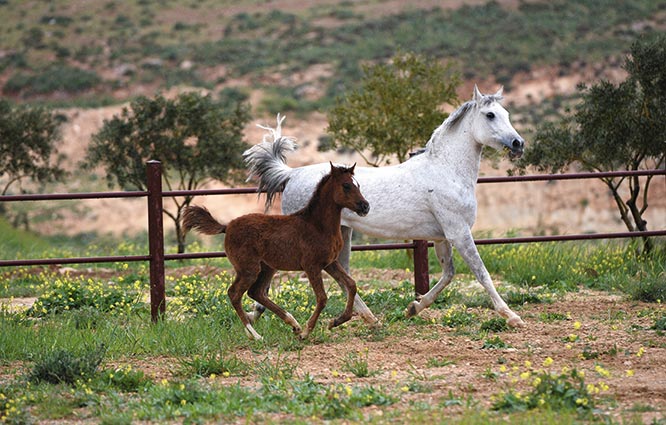


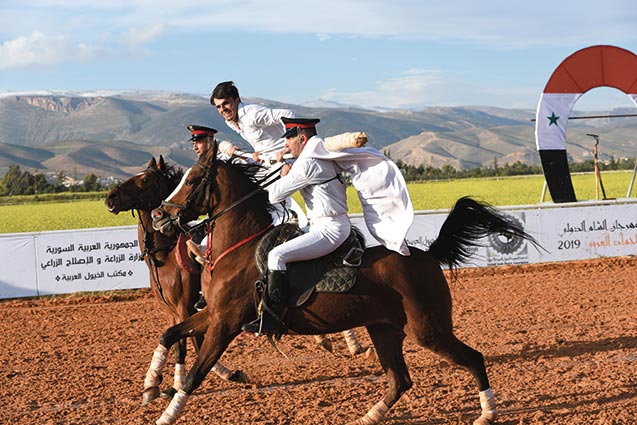
Late morning on Friday 19th, photographer Gudrun Waiditschka and I visited the Al Jadaan Stables owned by Basil Al Jadaan. Basil is an industrious and passionate supporter of the breed, both home and abroad. A few of his equine duties include being a member of the Executive Committee of WAHO, member of the Syrian Arab Horse Association and President of the Organising Committee of the festival. Basil’s encyclopaedic knowledge of Arabian horses and Syria is a reflection of his enthusiasm and love for both. He was another breeder who had his beloved horses stolen during the war but was fortunate, as a couple of horses of his breeding with family members were kept safe. These horses are now the foundation for the stud’s current breeding program.
Regrettably, the weather was against us as it was freezing and raining on and off, in truth, closer to snowing! Disappointingly we only had time to photograph a few of the pure Syrian Arabians there. First was a gem within the herd, the grey mare Dahmaa Amer (Shadeed x Murrah). To Basil’s knowledge she is one of two mares left worldwide of her strain Dahmaa Amer. Next came the handsome grey stallion Taj Al Khair (Johar Adeeb x Mansora), an Obayan Seheili which is an important strain for the Shammar tribe, taken in battle from the Sharif or King of Mecca. He was followed by an attractive dark grey filly named Samar (Bishir Al Jameel x Shams Al Khair), also of the Obayah Seheilieh strain.
When Basil’s horses were stolen, one precious young foal of the Keheileh Mimrahieh strain was left behind and was aptly named Ayda J, which translates to ‘the one that came back’. She has grown into a splendid mare and now has a pretty filly at foot named Maleka.
Then it bucketed with rain! We hastily retreated to the stables where we were able to photograph Nassar J (Omar Al Khayam x Sohaila), a chestnut stallion of Shwaiman Sabba strain and the grey mare, Bint Shamkha (Shadeed x Shamkha) of the same strain.
In the afternoon we attended the Arabian races at Al Demas. It continued raining, turning the track to liquid mud! It even snowed on nearby mountains, but this did not deter Syria’s courageous jockeys and horses from participating in the seven races. As the last race was run and won the sun started shining! Just in time for the exhilarating Equestrian Martial Arts Show, where Arabians and their riders from the Police Equestrian Club performed awe-inspiring feats of horsemanship.
A surprise event was the international archery display on horseback performed by Ali Ghoorchian (Iran), Anna Sokolska (Poland) and Walid Khawashkieh (Syria) riding Arabians borrowed from the Police Equestrian Club. We were also lucky to meet Adnan Azzam, the intrepid horseman, who, along with his two Syrian Arabians was leaving the next day on his Syria World Journey: riding from Damascus to Moscow. The planned route for his epic trek was via Iraq, Iran and Azerbaijan.
The next morning, Saturday 20th, we strolled from our hotel to the huge roundabout at Umayyad Square to bid farewell to Adnan Azzam and his two lovely Arabians. Upon arrival I was amazed by the large mass of people, TV crews and photographers gathered there. I had to stand on my tippy toes on the gutter to actually find the horses in the melee. Eventually I spotted a pair of white ears flickering above the crowd. An impossibility pushing through, so I made my way around the back where I literally ran into the horses’ hindquarters. Chaos reigned with flapping flags, a band playing and a swarm of spectators patting the horses and feeding them carrots while taking selfies. The horses nonchalantly took it all in their stride. Eventually we waved goodbye as Adnan, his Arabians and the crowd disappeared down one of Damascus’ busiest peak hour roads, accompanied by a medley of loud honking car horns.
The closing ceremony for the festival was held that evening. A highlight being the poignant plays, dances and songs performed by Syrian children from around the country, while films from the past eight years of conflict were shown on a large screen behind them. It brought home how wars affect and traumatise the most innocent and vulnerable people of all, the children.
The Al Sham International Arabian Horse Festival was certainly a welcome and fabulous celebration for Syria’s jewel in the crown, the Arabian horse. An equine that transcends both religion and politics while giving immense joy to thousands of enthusiasts around the world!
I would like to congratulation the Organising Committee comprising the Syrian Arab Horse Association, Syrian Equestrian Federation, Ministry of Agriculture and Agrarian Reform, Ministry of Tourism, Police Equestrian Club, Muhafza Sport Club and the Damascus Governorate for arranging such an outstanding festival.
